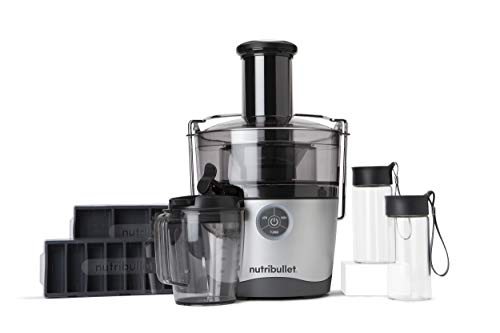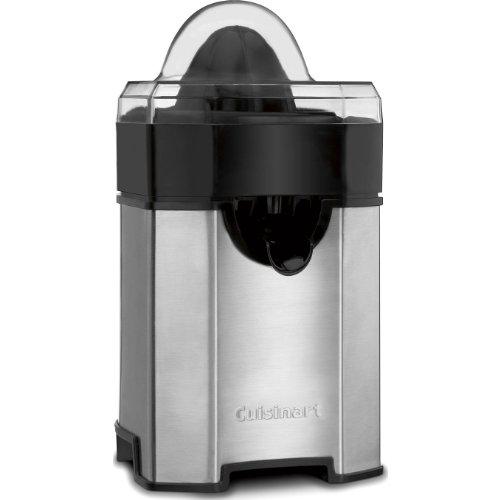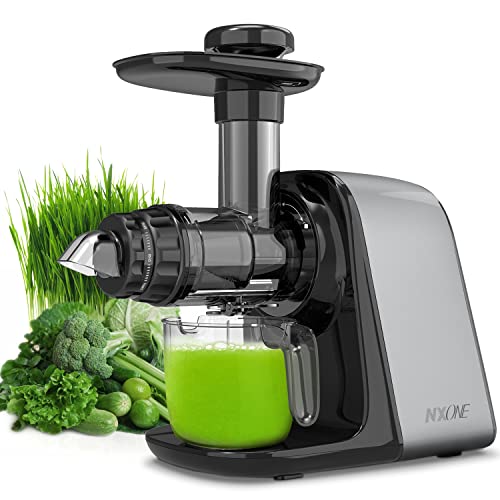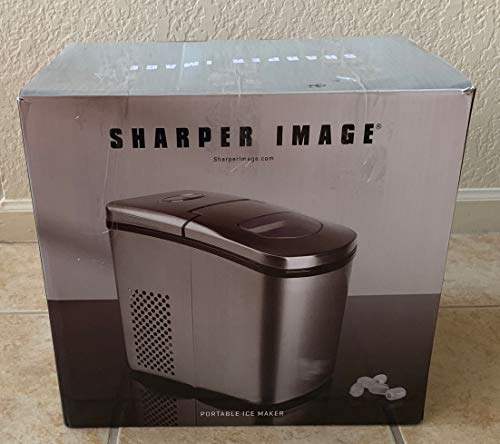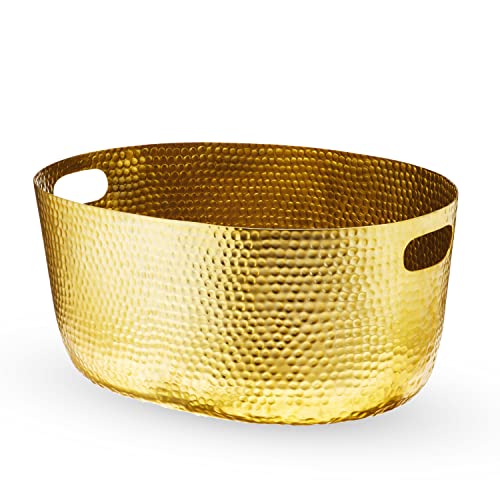- How Many Beers Are In a Keg? US Keg Sizes
- How to pour beer into keg in a kegerator?
- What are the benefits of drinking beer from a keg?
- What kind of beer is available in kegs, and where can you buy them from breweries or stores?
- How do you tap a keg, and what are the necessary tools that you need to do so properly?
- How to clean a keg?
- How long does beer last in a keg?
- How many kegs do I need?
- Is a keg cheaper than cans?
- Pros and Cons of using keg beer
- FAQs
- How much beer do I need for 75 people?
- How much does a keg cost?
- How long does a keg last?
- How many kegs do I need for 150 guests?
- How many kegs do I need for 200 guests?
- How many kegs do I need for my wedding?
- Can I get a keg delivered?
- What is the difference between a half-barrel keg and a full-barrel keg?
- What liquor do you need for a full bar?
- Do I need insurance for my keg?
- Can I return my keg when I’m done with it?
- How many beers in a half keg?
- Can I get a refund for an unused portion of my keg?
- What is the average cost per drink?
- Conclusion
How Many Beers Are In a Keg?
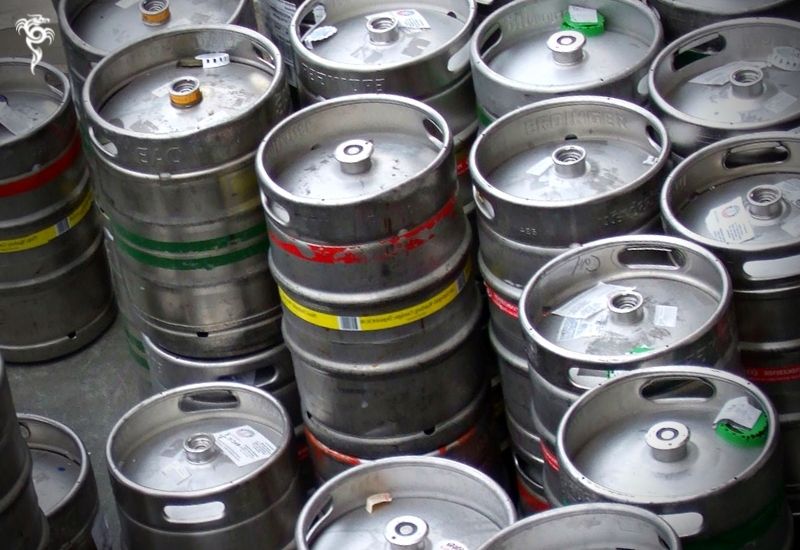
A keg is a metal container that holds beer. It is usually cylindrical in shape and has a tap on one end to allow the beer to be dispensed, usually placed in a kegerator. It can be either half or full size and is generally made of aluminum or stainless steel. So, How Many Beers Are In A Keg? Kegs come in different sizes, according to US keg sizes: Mini Keg, Cornelius Keg, Sixth-Barrel, Quarter-Barrel, Slim Quarter, Half-Barrel,50 Litre Kegs. According to Europe keg sizes, the standard barrel size is 11 UK gallons (50 liters). In this blog post, we will take a look at the different sizes of kegs and how much beer they hold. We will also explore some of the popular brands and types of beer that are available in kegs. So, if you’re interested in learning more about this topic, keep reading!
How Many Beers Are In a Keg? US Keg Sizes
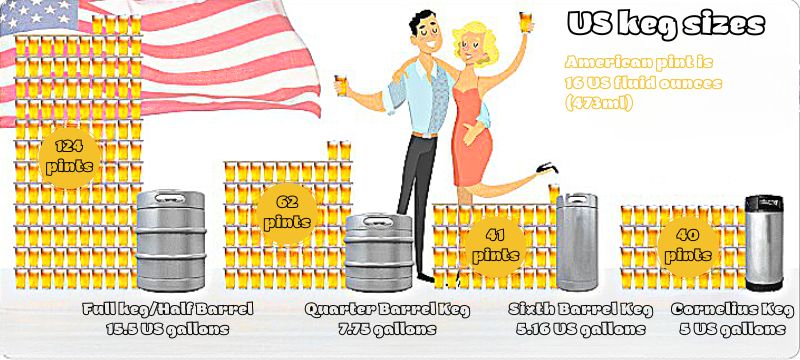
Mini Keg
The Mini Keg is an ideal choice for small gatherings of friends. With its 5-liter size, it can hold about 14 12 ounce pours and will fit in places where you might otherwise bring a keg that’s larger than needed! It will fit into most vehicles easily!
The most popular brands include Heinekenwith some craft import options available depending on your location – especially Warsteiner or Bitburger! To dispense them, simply open up both ends CO2 handy container, then use either spray holes located near the bottom left side as well top right spigot; they’re typically labeled “hip,” which refers to how much pressure needs release before pouring begins so you’ll get perfect head every time.
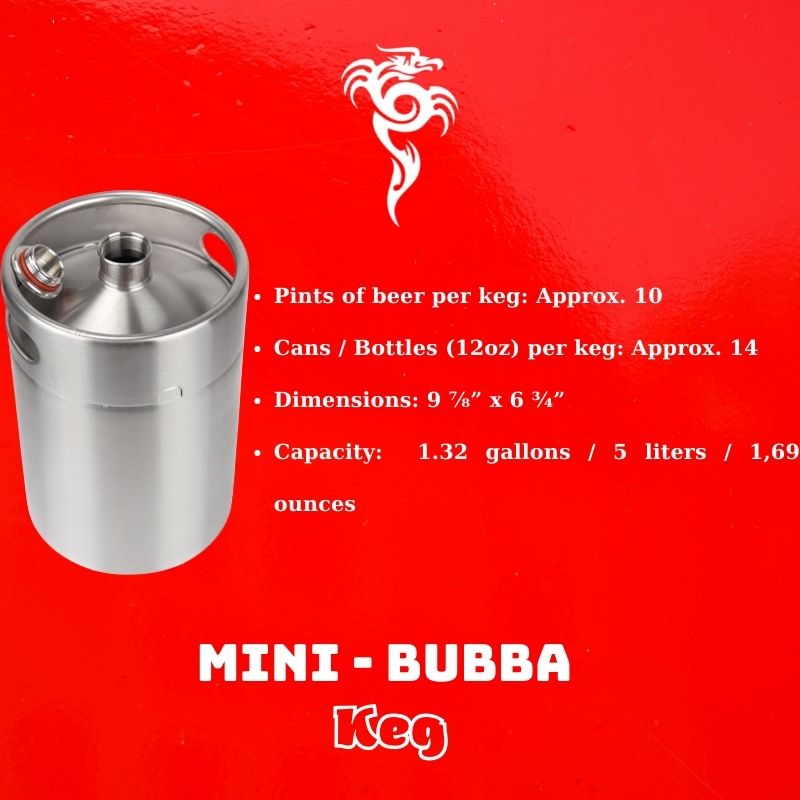
- Alternate Names: Bubba Keg
- Common Uses: One-time Use, Portable Applications
- Dimensions: 9 ⅞” x 6 ¾”
- Pints of beer per keg: Approx. 10
- Cans / Bottles (12oz) per keg: Approx. 14
- Capacity: 1.32 gallons / 5 liters / 1,69 ounces
Cornelius Keg
Cornelius Keg is a home brew keg, Pepsi Keg or Corny Keg. Homebrewers and craft beer drinkers alike are using the Cornelius Keg to enjoy their beverages on-draft, which are typically Ball-Lock style connections. The tall, cylindrical container was originally developed (and still used) for distributing soda like Pepsi or Coca-Cola; however, with a 5-gallon capacity like a typical homebrew batch plus its easy fill/clean design, many people want nothing more than going from a pot into a glass without having all those pesky bottles clanking together as they’re transported around your house!
Most Cornelius kegs utilize ball lock connection, but some older models do have pin locks too.
One advantage of the Cornelius keg is that it’s easier to clean and fill than some other types of kegs. Additionally, they’re stackable, so you can save space if you have any.
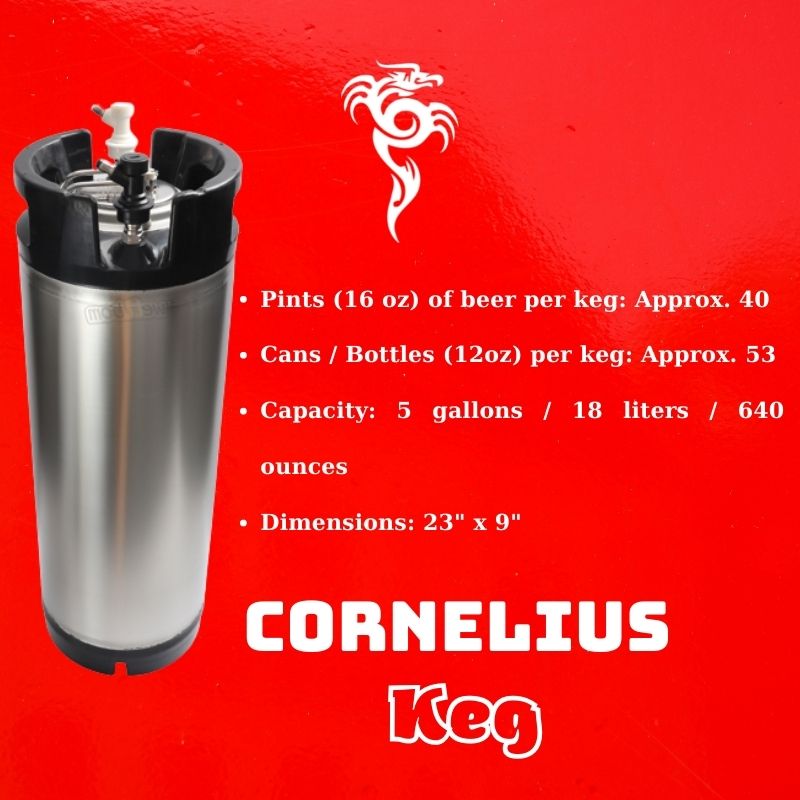
- Alternate Names: Corny Keg, Homebrew Keg, Soda Keg
- Common Uses: Home Brewing, Wine, Coffee, Kombucha
- Dimensions: 23″ x 9″
- Pints of beer per keg: Approx. 40
- Cans / Bottles (12oz) per keg: Approx. 53
- Capacity: 5 gallons / 18 liters / 640 ounces
Sixth-Barrel Keg
A Sixth Barrel keg- Sixtel or Log, also referred to as a Sixtel, is a popular choice for bars and restaurants. These kegs hold 5.16 gallons (19.5 liters) of beer, which is approximately 55 12-ounce glasses of beer.
Sixth Barrel Kegs, or ⅙ barrels as they’re often called, have become increasingly popular because many craft breweries offer their small batch experiments only in this size. A is very similar to B but has a slightly larger capacity (5.16 gallon capacity vs. 5.0 in a Corny Keg). A lot of restaurant owners opt for sixth-barreled kegs since they take up less space than bigger brothers and can dispense both handles at once without any issue whatsoever!
If you’re going into production mode with your dual tap refrigerator, then these will be essential to ensure there’s always something on hand! The main difference between these styles lies with ball lock connections vs. pin locks.
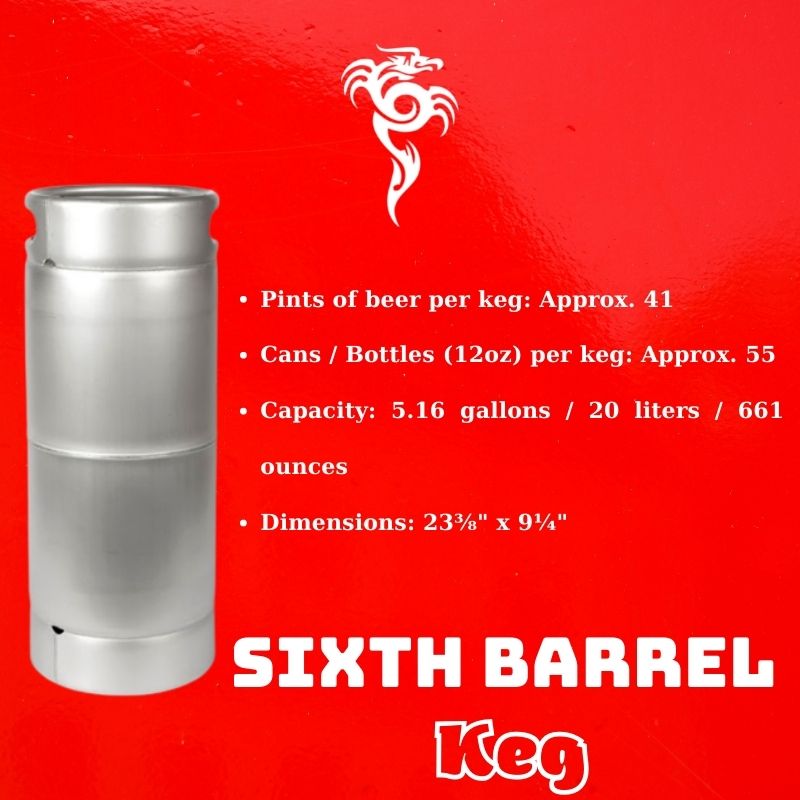
- Alternate Names: Sixtel, 1/6 Barrel, 1/6 BBL, Torpedo, Log
- Common Uses: Dual-Tap Kegerators, Home Brewing, Individual Use
- Dimensions: 23⅜” x 9¼”
- Pints of beer per keg: Approx. 41
- Cans / Bottles (12oz) per keg: Approx. 55
- Capacity: 5.16 gallons / 20 liters / 661 ounces
Quarter-Barrel Keg
A Quarter Barrel- Stubby Quarter or Pony keg is a popular choice for larger gatherings and parties. These kegs hold 7.75 gallons (29.33 liters) of beer.
The Quarter Barrel Keg is a great choice if you are looking to serve small to medium crowds with your favorite craft beer. It has a capacity of 7.75 gallons, it has the same footprint as most half barrels but can be easily handled because it’s less heavy at just under 50 pounds! This little guy holds 82 twelve-ounce pours before needing another refill, making them ideal for medium size occasions when serving close friends around one dozen beers each time period.
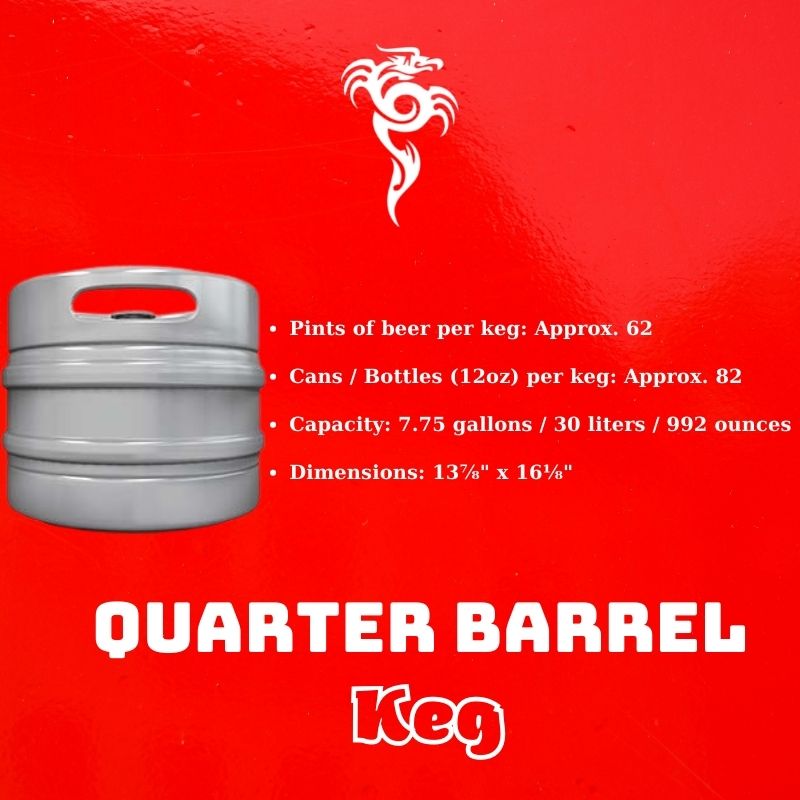
- Alternate Names: Pony Keg, Stubby Quarter, 1/4 BBL
- Common Uses: Small Parties
- Dimensions: 16⅛” x 13⅞”
- Pints of beer per keg: Approx. 62
- Cans / Bottles (12oz) per keg: Approx. 82
- Capacity: 7.75 gallons / 30 liters / 992 ounces
Slim Quarter Keg
A Slim Quarter, also known as a Stemmed Quarter, Tall Quarter or Slim 1/4 BBL, is similar to a Quarter-Barrel keg but is taller and narrower in width. These kegs hold 7.75 gallons (29.33 liters) of beer.
Slim Quarter – Also known as a Tall Quarter, these kegs are often used for small to medium-sized parties. They have the same capacity as their shorter relative: The Quarters Barrel Keg (QCB). Much like ⅙ barrel beers do here in America, this shorter container can hold 82 twelve-ounce pours compared with 70 from standard barrels
but offer you more space in which beers can be served! These Slim Quarts come with an extra inch of height, making them perfect if your Dual Tap Keg has limited taps or just needs some more room on top where additional bottles would go without bumping against other appliances inside cabinets above fridge doors.
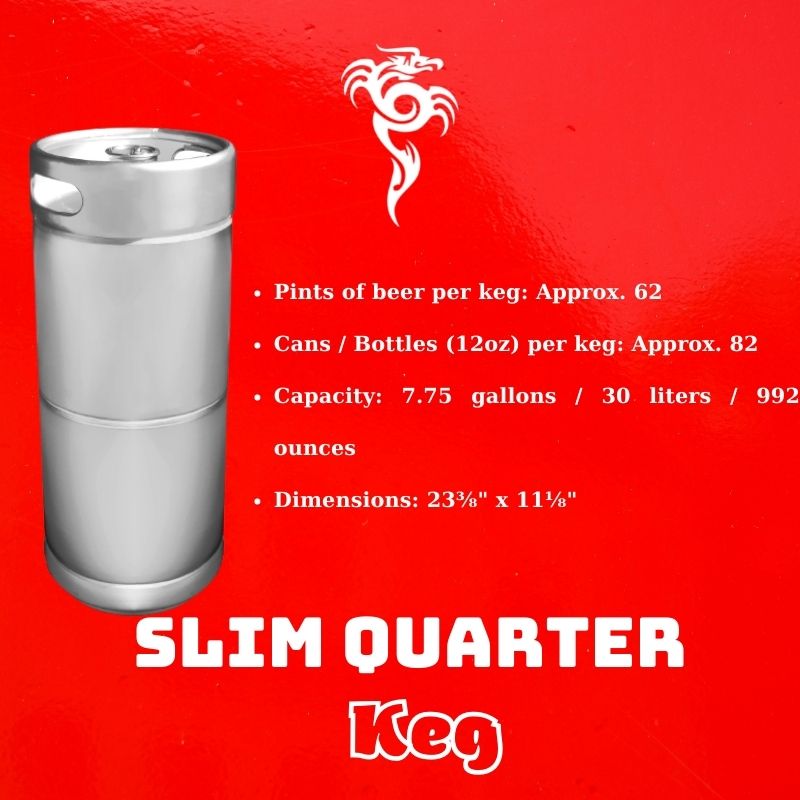
- Alternate Names: Tall Quarter, Slim 1/4 BBL
- Common Uses: Dual-Tap Kegerators; Small Parties
- Dimensions: 23⅜” x 11⅛”
- Pints of beer per keg: Approx. 62
- Cans / Bottles (12oz) per keg: Approx. 82
- Capacity: 7.75 gallons / 30 liters / 992 ounces
Half-Barrel Keg
A Half-Barrel, or Full-Size keg, is the largest size of keg available in the United States. These kegs hold 15.5 gallons (58.67 liters) of beer.
The 15.5-gallon Half Barrel Keg is probably what you picture when thinking of a beer keg, and it will fit any standard-sized fridge or bar! This thing can hold 165 twelve-ounce pours! This grandaddy type can be used in college parties, restaurants/bars, as well as large events to distribute macro brews like domestics (or even niche styles). If you want to try new beers, you’ll probably want to stick with smaller-sized kegs that suit your needs.
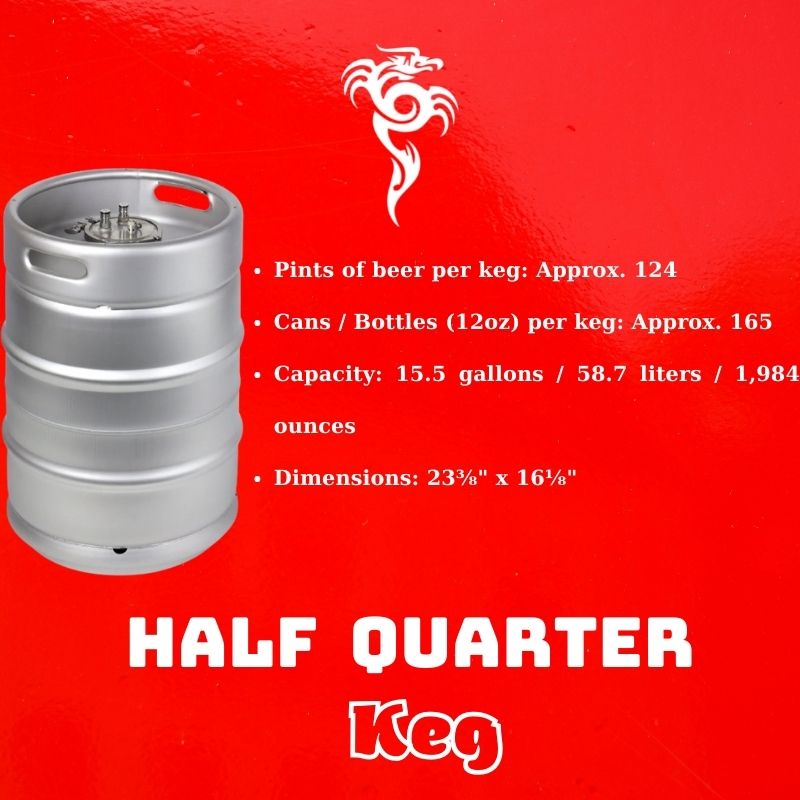
- Alternate Names: Full-Size Keg, Barrel of Beer, Full Keg, 1/2 BBL
- Common Uses: Home Bar, Large Events, Business, Frat Parties
- Dimensions: 23⅜” x 16⅛”
- Pints of beer per keg: Approx. 124
- Cans / Bottles (12oz) per keg: Approx. 165
- Capacity: 15.5 gallons / 58.7 liters / 1,984 ounce
50 Litre Keg – Europe keg sizes
A 50 Litre keg is the largest size of keg available in Europe.
The 50L keg is the most common style of vessel used by European breweries and breweries alike. This resembles its American cousin, Half Barrel Kegs (which can hold 30-40L). This is one of those common sizes found all over Europe, including Great Britain, where many popular import brands can be found, such as Heineken®, Stella Artois®, Newcastle™ and Hoegaarden.
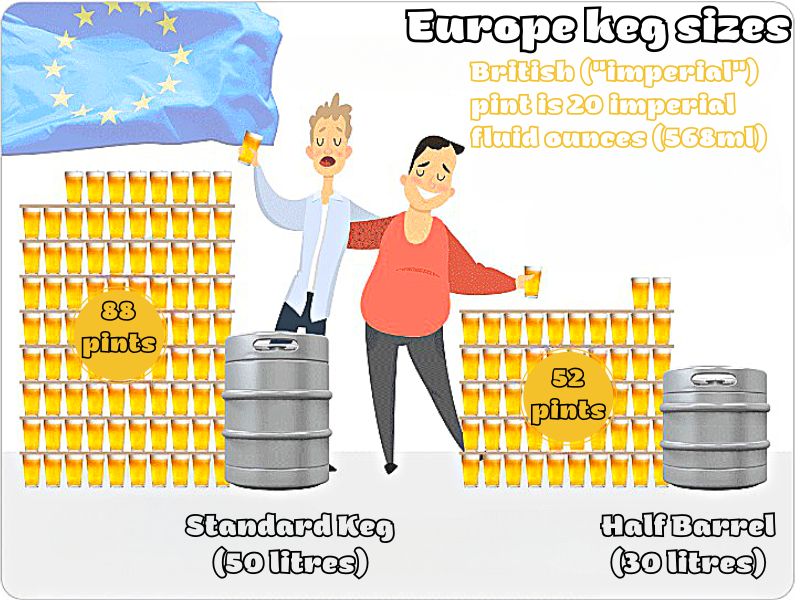
The US Sankey D keg coupler is the only type of connector that can connect two different types or sizes of beer tanks, so be sure you have it if you intend on importing!
In Europe, a standard keg holds 50 liters of beer or 13 US gallons. In pub parlance, this is almost precisely 88 pints which makes it enough for 11 imperial pint glasses full-time! Another round? When it comes to Beer Festivals across the UK, there’s no better way than using kilderkins when calculating quantities because they’re commonly used by festival goers who consume lots and lots of tasty craft beers all at once (you know what I’m talking about). A Kipperkin consists of 144 servings making up one drum-shaped tun. Bermudan Nelson Keller knit into two pieces like aprons front & back so you can hold more.
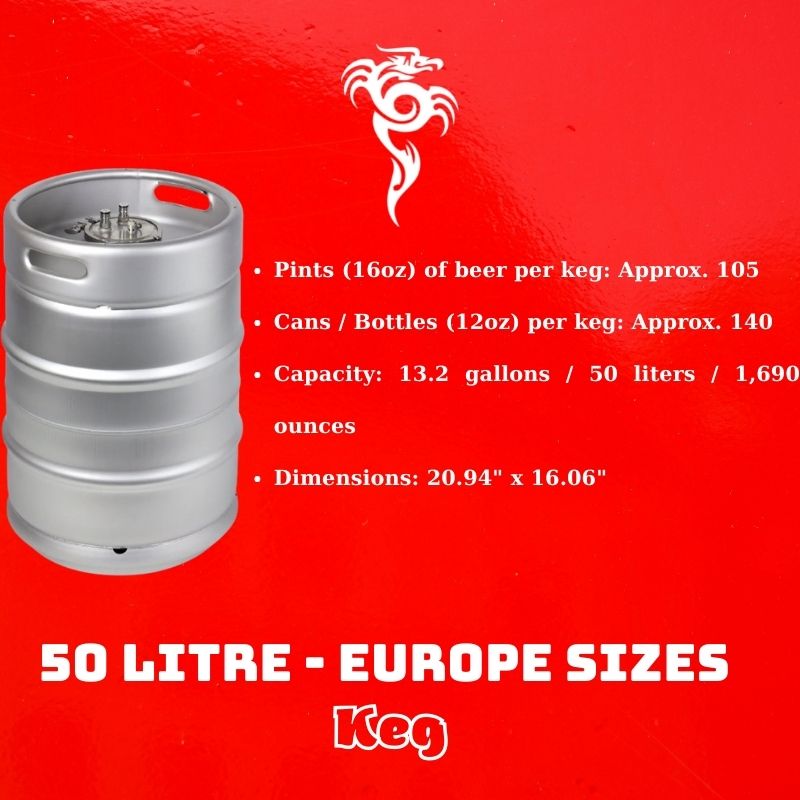
- Alternate Names: Import Keg, European Barrel, 50 Lite
- Common Uses: Home Bar, Medium-Large Events, Business, Frat Parties
- Dimensions: 20.94″ x 16.06″
- Pints of beer per keg: Approx. 105
- Cans / Bottles (12oz) per keg: Approx. 140
- Capacity: 13.2 gallons / 50 liters / 1,690 ounces
How to pour beer into keg in a kegerator?
If you’re wondering how to pour beer into a keg, you’ve come to the right place. Here’s a step-by-step guide on how to do it:
1. Sanitize your keg by giving it a good cleaning with hot water and soap. Rinse it out well and then sanitize it with a sanitizing solution made specifically for brewing equipment.
2. Place the keg in your fridge or other cool, dark place to chill for at least 24 hours before adding beer.
3. Sterilize your siphoning equipment by boiling it in water for 10 minutes.
4. Attach the tubing to the spigot on your keg and make sure it is sealed tightly.
5. Place the other end of the tubing into the container that will catch your beer.
6. Open the spigot and let the beer flow until it is about an inch from the top of the keg.
7. Close the spigot and carefully remove the tubing.
8. Place the lid on your keg and store it in a cool, dark place until you’re ready to serve it.
What are the benefits of drinking beer from a keg?
There are many benefits of drinking beer from a keg, including:
- Kegs allow you to store and serve large quantities of beer at once.
- Kegs allow you to keep your beer fresh for longer periods of time.
- Kegs are less likely to break or spill than bottles or cans.
- Kegs are easy to transport and can be used in a variety of settings.
If you are looking to serve large quantities of beer, or if you want to keep your beer fresh for a long period of time, then kegs may be the best option for you. Kegs are also easy to transport and can be used in a variety of settings, making them a convenient option for many beer drinkers.
Now, you’re reading “How Many Beers Are In a Keg?” of Phoenix Landing Bar. Keep reading!
What kind of beer is available in kegs, and where can you buy them from breweries or stores?
There are many different types of beer available in kegs, and they can be purchased from breweries or stores. Some of the most popular types of beer available in kegs include:
- IPA
- Pale Ale
- Stout
- Porter
- Lager
If you are looking for a specific type of beer, it is best to check with your local brewery or store to see if they have it available in keg form. Many breweries and stores will have a variety of different types of beer available in kegs, so you should be able to find what you are looking for.
How do you tap a keg, and what are the necessary tools that you need to do so properly?
Tapping a keg is a relatively simple process, but there are a few tools that you will need to do it properly. The necessary tools for tapping a keg include:
A keg tap
A keg tap is a device that is used to insert a tap into a keg. There are many different types of keg taps available, but all of them serve the same purpose.
A CO2 regulator
A CO2 regulator is a device that is used to control the amount of carbon dioxide that is being pumped into the keg. This is important because too much CO2 can cause the beer to foam and overflow.
A CO2 tank
A CO2 tank is a container that holds carbon dioxide under pressure. This is what is used to pump carbon dioxide into the keg.
Hoses and fittings
Hoses and fittings are used to connect the keg tap to the CO2 regulator and tank. There are many different types and sizes of hoses and fittings available, so you will need to make sure that you have the correct ones for your particular setup.
An air compressor (optional)
An air compressor is not strictly necessary, but it can be used to pump air into the keg instead of CO2. This can be helpful if you are having trouble getting the beer to flow from the keg.
To tap a keg, simply follow these steps:
1. Connect the keg tap to the CO2 regulator and tank.
2. Open the valve on the CO2 tank and turn on the air compressor (if using).
3. Adjust the pressure on the CO2 regulator until it is between 10-15 PSI.
4. Insert the keg tap into the keg and open the valve.
5. Beer should now be flowing from the keg! Enjoy!
To tap a keg, simply attach the keg tap to the top of the keg and then use the CO2 regulator to control the flow of beer. If you are using an air compressor, you can also use it to help dispense the beer. Once the beer is flowing, simply hold a glass under the tap and enjoy your fresh, cold beer.
Kegs are a great way to store and serve large quantities of beer. If you are looking to keep your beer fresh for a long period of time, or if you want to be able to serve large quantities of beer at once, then kegs may be the best option for you. Kegs are also easy to transport and can be used in a variety of settings, making them a convenient option for many beer drinkers.
Now, you’re reading “How Many Beers Are In a Keg?” of Phoenix Landing Bar. Keep reading!
How to clean a keg?
Cleaning a keg is important to maintain the quality of your beer. Cleaning your keg on a regular basis will help to ensure that your beer tastes its best and stays fresh for longer. If you notice any off-flavors in your beer, or if the beer starts to spoil quickly, then it is likely time to clean your keg. There are a few different ways to clean a keg, but the most common method is to use a cleaner specifically designed for cleaning kegs.
This type of cleaner will usually come with instructions on how to use it, but the general process is as follows:
1. Remove the lid from the keg and add the recommended amount of cleaner.
2. Fill the keg with hot water and swish it around to loosen any dirt or grime.
3. Let the keg sit for the recommended amount of time before draining it.
4. Rinse the keg out several times with hot water until all traces of cleaner are gone.
5. Let the keg air dry, or use a clean towel to dry it off.
How long does beer last in a keg?
Beer can last anywhere from a few weeks to several months in a keg, depending on how it is stored. If you store your beer in a cool, dark place, it will last longer than if you store it in a warm, light place. Additionally, the type of beer you are storing will also affect its shelf life. IPAs and other hoppy beers will generally only last a few weeks in a keg, while stouts and other dark beers can last several months. Ultimately, it is best to consume your beer within a few weeks of tapping the keg to ensure that it is at its freshest.
Beer can last for months in a properly sealed and refrigerated keg, but it will start to lose its flavor after about 2-3 weeks. Once the beer has been tapped, it will only last for a few days before going flat. For this reason, it is best to only tap as much beer as you think you will drink within a few days.
How many kegs do I need?
The number of kegs you need will depend on the size of your event and the amount of beer you want to serve. For a small party, one or two kegs should be enough. For a larger party, three or more kegs may be necessary. It is also important to consider how much beer each person at your event is likely to drink. If you are unsure, it is always better to have too much beer than not enough.
Now, you’re reading “How Many Beers Are In a Keg?” of Phoenix Landing Bar. Keep reading!
One standard-size keg (15.5 gallons) can hold approximately 165 12-ounce cups of beer. This number will vary depending on the type of beer and how much foam is produced when pouring.
In general, one keg should be enough for:
- A small party of 50 people or less
- A medium-size party of 100 people or less
- A large party of 150 people or less
If you are planning on serving alcohol at your event, it is always best to check with your local liquor laws to ensure that you are in compliance. Additionally, it is a good idea to have a designated driver or other transportation options available for your guests.
Kegs are a great way to store and serve beer, but it is important to understand how they work and how to properly care for them. By following these tips, you can ensure that your kegs will last for many years and that your beer will always taste its best.
Is a keg cheaper than cans?
The short answer is no. If you’re buying beer by the can, you’re almost always going to get a better deal than if you bought that same beer in a keg. But there are some circumstances where buying beer in bulk (a keg) can save you money.
For example, if you’re having a big party where everyone is going to drink a lot of beer, buying a keg might be cheaper than buying enough cans for everyone.
Additionally, if you live close to a brewery that sells kegs of their beer, you might be able to get a discount on the purchase price. Buying direct from the source is almost always going to be cheaper than buying from your local liquor store.
Ultimately, it’s up to you to decide whether buying a keg or cans of beer is the better deal. If you’re not sure, it’s always best to compare prices before making your purchase.
Depending on each person, keg beer is better than canned beer, or canned beer is better than keg beer. It all comes down to personal opinion. However, some people think that one is better than the other for specific reasons.
For example, some people believe that keg beer tastes better because it has less time to oxidize. Cans of beer, on the other hand, are often seen as being more convenient because they’re easier to transport and don’t require special equipment (like a keg tap) to open.
Ultimately, it’s up to you to decide which type of beer is better for your taste and needs. If you’re not sure, it’s always best to try both and see which you prefer.
There are many different factors to consider when deciding how many kegs to buy for your party. The size of your party, the type of beer you’ll be serving, and how much each person is likely to drink are all important factors to consider. Additionally, it is always best to have a little bit of extra beer on hand in case your guests drink more than you expect.
Pros and Cons of using keg beer
There are both pros and cons to using keg beer.
Some of the pros include:
- Keg beer can save you money if you’re buying in bulk.
- Keg beer is often fresher than canned beer because it has had less time to oxidize.
- Kegs are easier to transport than cases of canned beer.
- Some people believe that keg beer tastes better than canned beer.
Some of the cons of using keg beer include:
- You need special equipment (like a keg tap) to open a keg.
- Kegs take up more space than cans of beer.
- If not properly cared for, kegs can leak and ruin your floor or furniture.
FAQs
How much beer do I need for 75 people?
For a party of 75 people, you will need approximately three kegs of beer. This will provide your guests with enough beer to drink throughout the course of the event.
How much does a keg cost?
The cost of a keg will vary depending on the type of beer and where you purchase it. In general, you can expect to pay between $75 and $150 for a standard-size keg.
How long does a keg last?
A keg of beer will last for approximately six weeks if it is properly cared for. After six weeks, the beer will start to lose its flavor and become stale.
How many kegs do I need for 150 guests?
For a party of 150 guests, you will need approximately six kegs of beer. This will provide your guests with enough beer to drink throughout the course of the event.
How many kegs do I need for 200 guests?
For a party of 200 guests, you will need approximately eight kegs of beer. This will provide your guests with enough beer to drink throughout the course of the event.
How many kegs do I need for my wedding?
The number of kegs you’ll need for your wedding will depend on the size of your guest list and how much each person is likely to drink. In general, you can expect to need two kegs for every 100 guests.
Can I get a keg delivered?
Yes, most liquor stores and breweries will deliver kegs of beer to your home or event location. Call ahead to inquire about delivery options and fees.
What is the difference between a half-barrel keg and a full-barrel keg?
A half-barrel keg is equivalent to 15.5 gallons of beer, while a full-barrel keg is equivalent to 31 gallons of beer.
What liquor do you need for a full bar?
To set up a full bar, you will need to purchase a variety of liquor, including vodka, gin, rum, tequila, and whiskey. You will also need to buy mixers, such as soda water, tonic water, and juice. Additionally, you’ll need to purchase glasses and other supplies.
Do I need insurance for my keg?
Yes, you should purchase liability insurance if you plan on serving alcohol at your event. This will protect you in the event that someone is injured or becomes sick after drinking your beer.
Can I return my keg when I’m done with it?
Yes, most breweries and liquor stores will accept returned kegs. Be sure to call ahead to inquire about their policy.
How many beers in a half keg?
A half keg contains approximately 165 12-ounce cups of beer.
Can I get a refund for an unused portion of my keg?
No, most breweries and liquor stores do not offer refunds for unused portions of kegs.
What is the average cost per drink?
The cost of each drink will vary depending on the type of alcohol you’re serving. In general, you can expect to spend between $2 and $5 per drink.
Kegs are often seen as being more economical than buying cans or bottles of beer because they allow you to buy beer in bulk. A standard-size keg contains 15.5 gallons of beer, which is equivalent to 165 12-ounce cups of beer.
Conclusion
In short, Kegs are a popular way to store and serve beer, but the keg sizes vary from country to country. How Many Beers Are In A Keg? Depending on where you live, the answer may surprise you. We’ve compiled a list of US and European keg sizes for your convenience. If you’re looking for a keg for your next party or event, be sure to know the size of a keg that will work best for you. Share this post with your friends and neighbors so they can be prepared for their next big party, too!
If you want more information to refer to phoenixlandingbar.com
